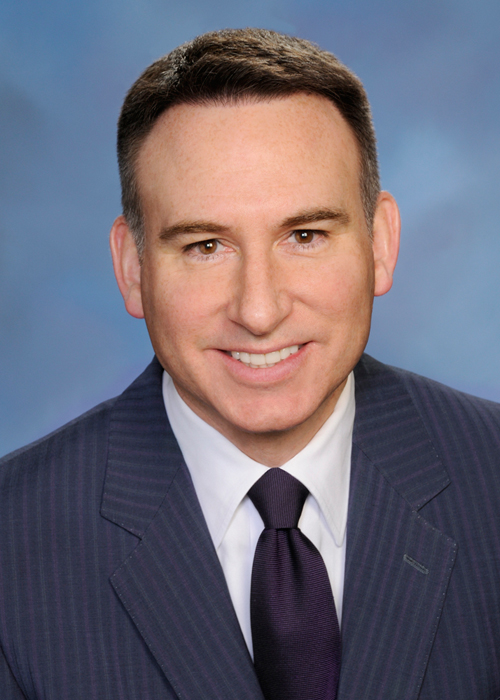As King County Executive Dow Constantine prepares to send his 2015-2016 budget proposal to the King County Council on September 22nd, the Executive’s Office is releasing information on new efficiencies and performance improvements which it says are saving millions. “In this budget we have again held the cost of county services to the rate of population growth plus inflation – about 3.5 percent” said Executive Constantine. “That is the course I charted five years ago when budgets were growing at 5 to 6 percent per year or more, and together, we have delivered.”
According to the Executive’s Office, over $15 million in new efficiencies are included in the new budget. Over the biennium, millions in savings are coming from a Lean design overhaul of Metro Transit’s Vehicle Maintenance operations. Taxpayers are paying 20% less for every ballot counted by King County Elections. County employees are receiving healthy living incentives that improve health outcomes and deliver more affordable care. And tails are wagging in response to changes at Regional Animal Care Services of King County (RASKC), the county agency responsible for the welfare of domestic animals.
Regional Animal Services of King County
Lean improvements implemented over the last year have allowed the agency to “do more with the same resources or maintain service levels while reducing cost,” said Tom Koney, Deputy Director of Executive Services. RASKC’s efforts have made it easier to adopt pets, and enhanced the care of over 4,300 dogs, cats, and other animals.
Until recently, the only place a person could go to adopt an animal from the county was the adoption center in Kent. In 2014, RASKC expanded its services by establishing the Eastside Pet Adoption Center in Kirkland. The construction was funded by grants and the space was generously provided through a $1/year rent arrangement with Petco and the Petco Foundation. “We added this 7-day-a-week adoption location without adding any staff” said Deputy Director Koney.
In terms of performance metrics, RASKC management focused on length of stay for animals to identify roadblocks to moving through the shelter system. Staff was able to reduce average shelter days by almost one day in 2014 compared to 2013. Shelter flow (how many are at the shelter on a given day) also decreased. Fewer animals in the shelter leads to reduced stress on the other boarding animals, better health, and increased adoptability. In total, shelter staff expenses were down $90,000 in 2014.
Metro Transit Vehicle Maintenance Improvements
A Metro Transit project is producing major savings in the Vehicle Maintenance division. Early in 2014, the Vehicle Maintenance division determined that out of its $18 million parts inventory, up to one-third of it had not been used in at least two years. “Now, staff… are partnering with the Lean Continuous Improvement Team in a multi-year effort to reduce overall inventory levels by 30% and to put systems in place to improve inventory acquisition and management” reports the County. After just a few months, the Vehicle Maintenance division has already reduced the dollar value of its parts inventory by more than $100,000.
To achieve these improvements, Metro Transit halted new orders, began using up some of the existing supply of excess parts, and returned unused parts to suppliers. The division then put in place procedures to restrict adding new part types to prevent surplus accumulation in the future.
King County Elections
In the past year, the agency worked not only to control costs but also to integrate emerging technologies and expand opportunities to vote. Elections expanded outreach to overseas and service voters to educate them about the online ballot marking program. In the 2013 general election, 4,150 voters accessed their ballot using the online ballot marking program. Even more are expected to use the technology in the upcoming midterm election in November. County Elections also partnered with the Department of Juvenile and Detention to provide ballots to eligible incarcerated voters. In 2013, the county expanded ballot drop-off locations by 192%. The county also outsourced secured ballot transport, saving over 400 annual staff hours that can be directed to other needs.
King County Elections improvement projects saved nearly $2 million for the 2015-2016 budget. According to a recent press release from the Executive’s Office, “Numerous improvements – everything from improved signature verifications to reconfiguring the work floor – have reduced the time required to process ballots and helped cut the cost of processing each ballot by 20%.”
What lies ahead for King County Elections? Kim van Ekstrom, Communications Manager for the Department of Elections said that this year was just the start of a five-year strategic plan that the department will be implementing through 2018. Major priorities include “a five-year capital improvement plan for technology… online voting… [and] a full assessment of barriers to voting for those with aging, with disabilities, and other social factors.”
Healthy Incentives Program
King County is still expanding and refining its award winning Healthy Incentives Program, which promotes healthier habits and lifestyles for county employees and their families. King County spends almost $200 million per year to insure 14,000 workers and their families. in 2012, with over 90 percent of employees participating in the program, $61 million in surplus health care funds were returned to the county because cost growth was being contained even better than actuaries had anticipated.
The Healthy Incentives program helped county employees and their families to quit smoking, lose weight, and avoid or manage chronic diseases. As of May 2014, participants reported 24 tons of weight loss and smoking rates dropped from 12 percent of employees to less than 5 percent. The program spans across all departments, providing countywide, comprehensive programs to incentivize healthier lifestyles: onsite Weight Watchers, mindfulness training to reduce stress, gym memberships, healthy eating programs, and nicotine cessation coaching.
Karleen Sakumoto, King County Employee Health & Well Being Manager, pointed out that unlike some programs that provide one-time rewards, the King County program is still evolving. “We’re in the process of trying to reformulate the program,” Sakumoto said. “We’re going to be changing our focus slightly… We’re probably not only going to focus in on dollars of cost savings, but other outcome measures. We are looking specifically at organizational health… Are people feeling good about coming to work and can we make an impact on their stress level? We focused initially on eating well, moving more, quitting tobacco, and living smart. But we heard from employees and from management that we need to be focused more on stress.”
The program, which won a 2013 Innovations in American Government Award from the Harvard Kennedy School of Government, has generated interest among local employers who’d like to replicate its success in their own business operations. Sakumoto reported that some elements of the program “would be easier for small employers to implement. Especially some of the healthy workplace things.” Sakumoto says bigger employers, like the county, are more likely to self insure, which provides greater flexibility to control deductibles and maximize healthy incentives.

- Dow Constantine, King County Executive
Best-Run Government
Under Executive Constantine, King County has pursued an ambitious agenda based around equity, confronting climate change, and improving the performance of government. “Delivering on promises is one marker of success,” Constantine said, “We aspire not just to be good but to be exemplary – pursuing the goal of becoming the best-run government in the nation.”
In October 2013 the Washington Business Alliance gave King County high marks in its Good Government Check, which brought together county employees and local business executives to review county operations. Overall, the business leaders were impressed by what they observed. “Enthusiasm was uniformly high, as was the teamwork among the presenters” said David Giuliani. Howard Behar summed up the sentiment of the group when he described the Executive Leadership and Staff as “a highly motivated group. As solid as any business leadership team I have seen.”
